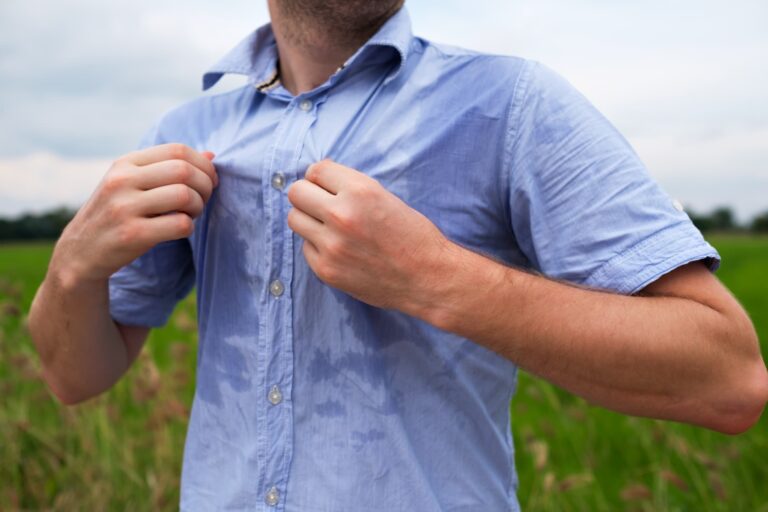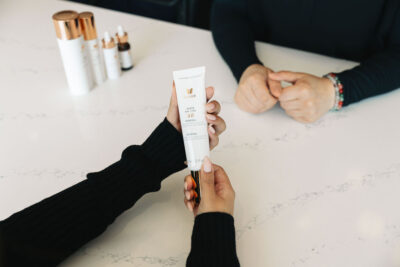March 23, 2023
Hyperhidrosis is a medical condition that is characterized by excessive sweating and can significantly impact an individual’s social and emotional well-being. It is vital to understand its psychosocial effects and impact on self-esteem, relationships, and daily activities. Let’s explore hyperhidrosis’ social and emotional consequences and discuss potential management strategies.
What is Hyperhidrosis?
Hyperhidrosis is a dermatological condition characterized by excessive and uncontrollable sweating beyond what is required for thermoregulation. It is categorized into primary focal and secondary generalized hyperhidrosis. Primary focal hyperhidrosis (PFH) typically affects the axillae, palms, soles, and craniofacial regions, with onset during childhood or adolescence. Secondary generalized hyperhidrosis (SGH) is often caused by an underlying medical condition, medication, or systemic disease and can manifest at any age.
Epidemiological studies have shown that hyperhidrosis affects approximately 3% of the population in Canada, with a higher prevalence reported in Alberta, Canada. The condition is associated with considerable emotional, psychological, and social burdens, affecting various aspects of an individual’s life.
Psychosocial Effects of Hyperhidrosis
Individuals with hyperhidrosis often experience social anxiety and embarrassment due to visible sweat marks, wet handshakes, or difficulty holding objects. These experiences can lead to avoidance of social interactions, negatively impacting personal relationships and career prospects. Moreover, hyperhidrosis can interfere with daily activities, such as driving or operating electronic devices, resulting in frustration and decreased quality of life.
Self-esteem and Body Image
The stigma associated with excessive sweating often results in lowered self-esteem and poor body image. Individuals with hyperhidrosis may feel judged or rejected by others -thus leading to depression, social isolation, and anxiety disorders, further exacerbating the emotional impact of the condition.
Relationships
Hyperhidrosis can strain relationships, as the individual may be reluctant to engage in physical contact, such as hugging or holding hands, for fear of embarrassment. Additionally, the condition may impact romantic relationships, with individuals feeling uncomfortable in intimate situations or avoiding them altogether due to concerns about excessive sweating.
Daily Activities
Excessive sweating can also hinder an individual’s ability to perform day-to-day tasks, such as writing, typing, or using touchscreens, as the sweat may cause slippage or equipment malfunction. Hence, this leads to feelings of inadequacy and frustration, diminishing self-esteem and overall life satisfaction.
Management Strategies
Despite the significant psychosocial burden associated with hyperhidrosis, many individuals do not seek medical treatment due to embarrassment or lack of awareness about available treatment options. However, effective management strategies exist, including topical antiperspirants, oral medications, iontophoresis, botulinum toxin injections, surgical interventions and RF microneedling treatments. Early diagnosis and intervention can mitigate hyperhidrosis’ social and emotional impact, improving quality of life and overall well-being.
Conclusion
Hyperhidrosis is a medical condition with far-reaching social and emotional consequences, impacting self-esteem, relationships, and daily activities. Greater awareness about the psychosocial effects of hyperhidrosis and available treatment options is crucial for early intervention and improved quality of life. By understanding the comprehensive impact of this condition, healthcare professionals can better support their patients in managing hyperhidrosis and addressing its emotional and social consequences.
At Vida Dermatology, we have skilled doctors that know what is suitable for your skin. Our dermatologists help you feel like yourself again by curating treatments just for you. Visit us to learn more!



